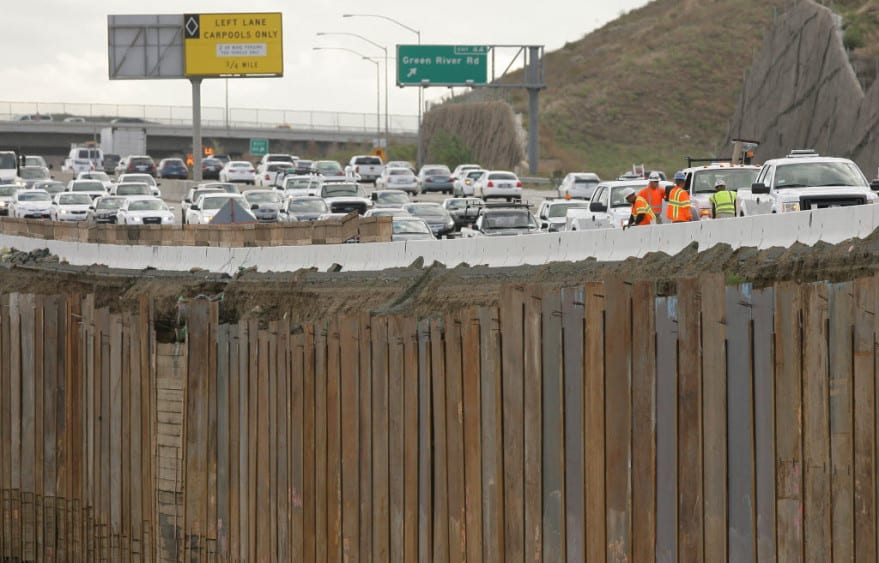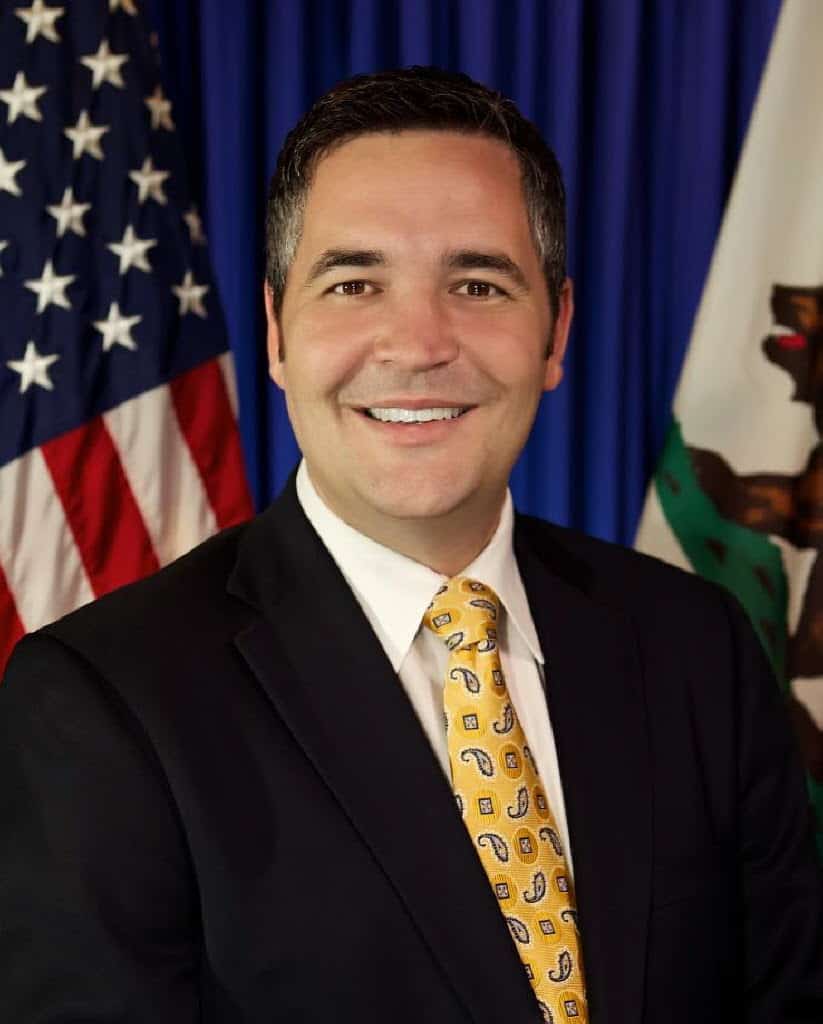BY DAVID DOWNEY / STAFF WRITER
Gazing out his district-office window at the damaged section of Highway 91 and thinking of the I-10 bridge that collapsed in July, Assemblyman Eric Linder, R-Corona, is apprehensive about the forecast for a soaking-wet winter.
“We’ve had two weather incidents in the last couple months,” Linder said. “And they have absolutely caused havoc on our roads.”
Call it an omen. Or a harbinger of things to come.
Whatever it is, the thought of another incident like the one that caused concern about possible damage to an 80- to 100-foot-long section of the 91 at Green River Road in Tuesday’s rain and kept two westbound lanes shut Wednesday is unsettling to commuters and transportation officials.
“We can’t have another day like this,” said John Standiford, deputy executive director for the Riverside County Transportation Commission, which finances major road construction projects. “Traffic is just horrible.”
WHEN THE SKIES OPEN UP
Yet, if El Niño slams Inland Southern California as hard as the experts say it will, Linder, who has been trying to persuade colleagues to spend more on road repair, is afraid this week’s 91 snarl will be just the beginning of traffic nightmares.
Given that this week’s worries were triggered by less than 2 inches of rain, he said, “What will we be dealing with when it opens up on us?”
There lies the challenge, transportation officials say.
An example of what can happen came last December when a downpour stalled over a hill that burned a few months earlier and sent a cascade of mud across eastbound 91 west of Corona.
“It just overwhelmed the system,” said Caltrans spokesman David Richardson in Orange County.
Terri Kasinga, a Caltrans spokeswoman in San Bernardino, said a steady barrage of storms, like El Niños of the past have been known to deliver, have a tendency to create problems in places where they are not anticipated.
Kasinga cited the collapse of a section of Highway 330, the road that connects the Inland valleys to Running Springs, almost five years ago.
“With the 330, that caught everybody by surprise,” she said. “The same thing with the Tex Wash (bridge on I-10). We had no way of knowing that we were going to lose a major interstate in one direction.”
Similar surprises can be expected this winter, she said.
RACE AGAINST THE CLOCK
At the same time, Kasinga said Caltrans is trying to get ahead of potential problems by tackling projects that fortify weak roads and targeting historical trouble spots.
An example of the latter is the Artic Circle, the section of Highway 18 between Big Bear Lake and Snow Valley. Kasinga said Caltrans just launched nighttime closures to clean storm drains, replace damaged guard rail, fortify the road shoulder and clean out rock-fall netting. Rocks often tumble down the steep slopes above onto the highway.
Throughout the year, Caltrans has been laying down a new concrete bed along several miles of I-15 near the top of Cajon Pass, Kasinga said. And while that project won’t be completed until spring, she said, much of the new pavement is in place and it should hold up in a storm.
“The good news is, we’re going to have a good portion of it done before it rains,” she said.
Down in the valley, one particular construction project should wrap up entirely before the storms hit. That’s the widening of I-215 in Perris and Menifee that’s been going on since 2013.
“We’re hoping to have that open by the end of next month,” Standiford said.
But don’t expect the 91 widening in central Riverside to wrap up until early next year, Kasinga said.
And forget about the 91 remake in Corona – that project’s just getting cranked up.
WHERE AND HOW HARD
Out in the desert, a county bridge project should be completed before the rains hit in earnest, said Juan Perez, director of the Riverside County Transportation and Land Management Agency. That would be the Ragsdale Road bridge, just downstream from the I-10 bridge that blew out. It, too, had to be replaced.
The county maintains more than 2,100 miles of roads in unincorporated areas and 109 bridges. “In some cases, our bridges are quite old,” Perez said. The Ragsdale span was one of those.
“That’s an old timber bridge that got built in the 1930s,” he said.
As well, Perez said the county has been busy cleaning out culverts, grading road shoulders, repairing damaged pavement and lining up contractors who can fix storm damage on a moment’s notice.
“We’re ready to tackle it if something major happens,” he said. “Of course, one never knows with Mother Nature where it’s going to hit and how hard.”
Kasinga maintained that Caltrans also is ready.
“We’re going to hope for the best, but be prepared for the worst,” she said.
Contact the writer: 951-368-9699 or [email protected]




